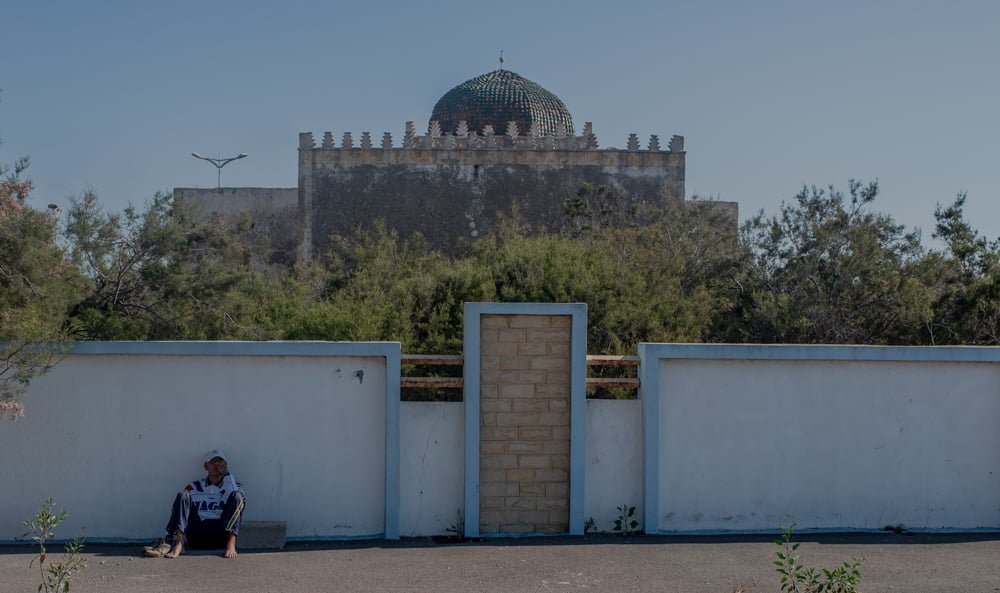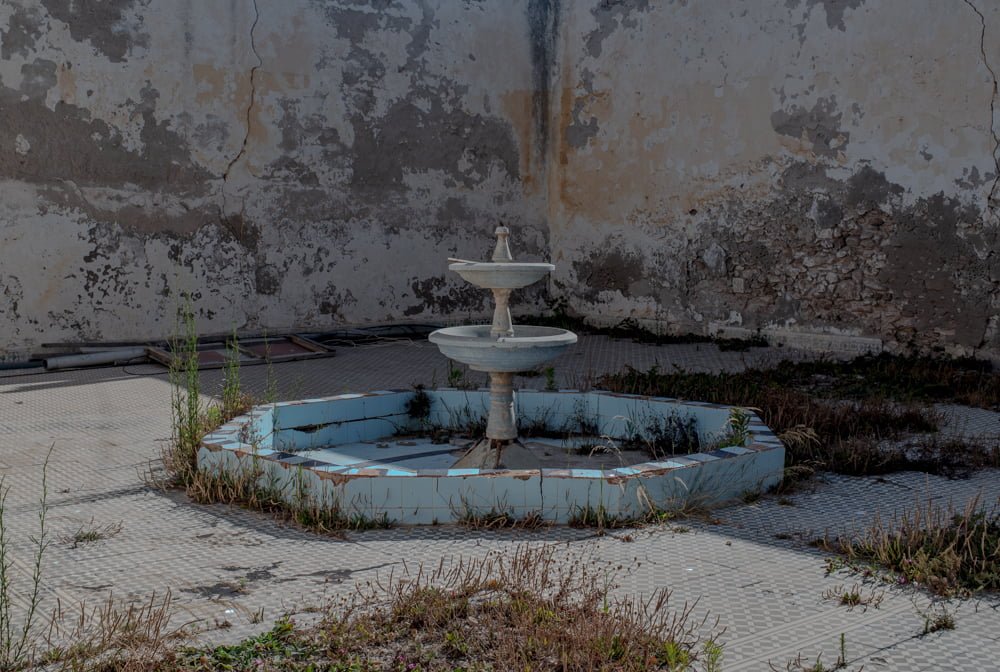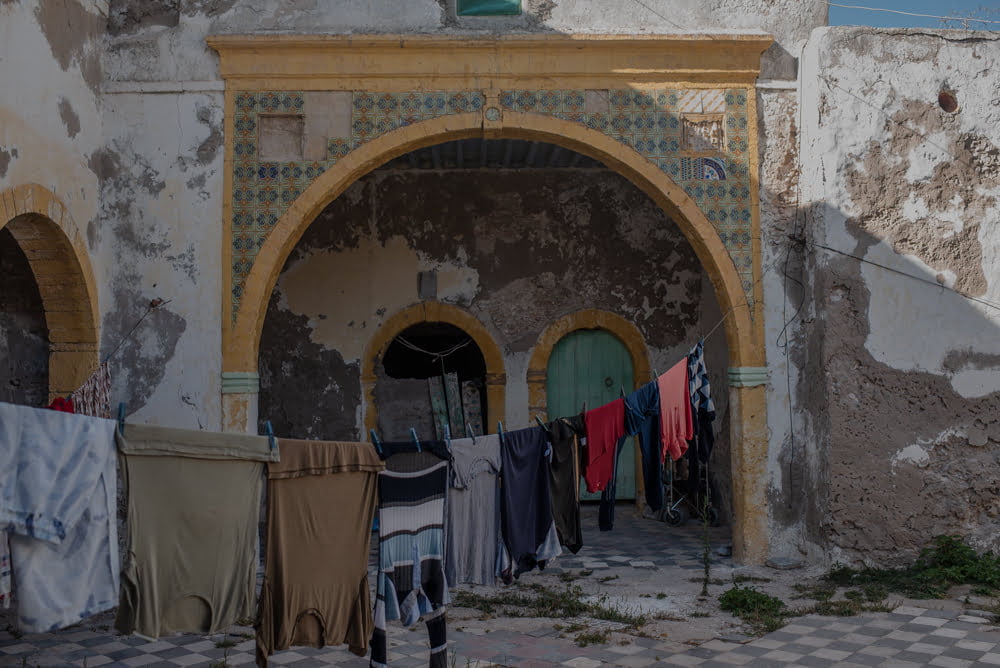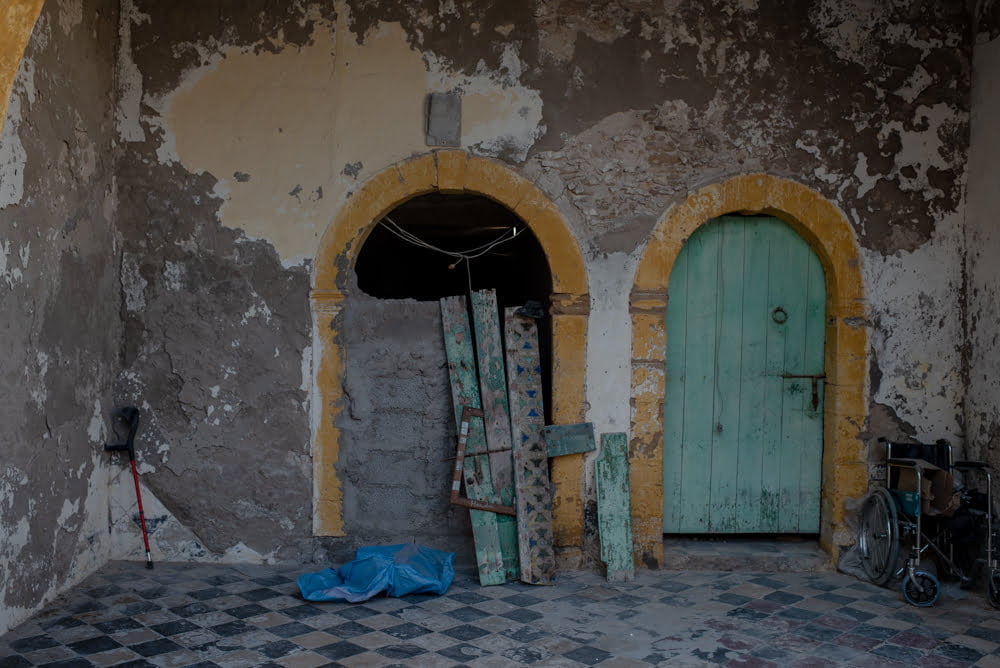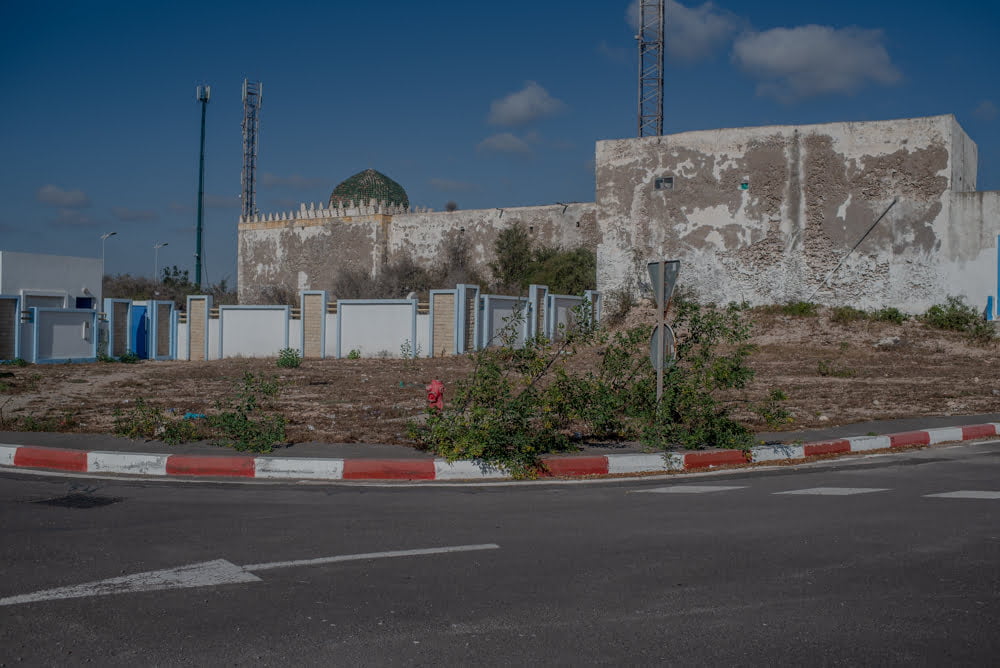At the furthest southern edge of Essaouira a large marabout tomb is becoming increasingly suffocated by creeping modernity. Once isolated it is now hemmed in by a sewage works, a complex of roads, industrial buildings and several large modern houses. This cacophony of progress diminishes much of the visual sanctity of the shrine.
I have visited previously on several occasions, walking firstly alongside Essaouira’s modern concrete beach promenade towards the small lighthouse before cutting a little inland where the shrine is found. Its green dome and grey crenellated walls, suggestive of a fortress rather than a shrine, manage to still be seen within the urban chaos around it. On the two occasions I have visited previously I had not managed to gain entry to the building from the family living at the site; this time I resolved to be a little more assertive.
Little appears to be known about Sidi Magdoul, at least online. One account suggests he was a Scottish sea captain by the name of MacDougall whose ship sank off the western Moroccan coast some centuries ago, he washed ashore and subsequently became established locally and remembered with a Koubba. Another more likely account suggests that during the middle ages a muslim saint belonging to the Regraga brotherhood named Sidi Mogdoul (Sidi Megdoul) was buried in Essaouira. The legend goes that he ‘carried out twenty times the pilgrimage to holy places of islam’ , and that he for 40 years ‘fighted the infidels’ and died at the age of 140.
Another website describes him as the most famous of Essaouira’s marabouts.
On this occasion, following substantial pleading, I was permitted to see inside the complex. I had assumed that all of these historical buildings are structurally well maintained, and I was disappointed to find that this shrine was much neglected which probably explained reluctance to allow my entry before. A young man pointed to a non-functioning, old blue fountain standing in the centre of a neglected and tatty courtyard and then to a series of crumbling golden arches with green inlaid tiles which were semi-obscured by lines of drying washing.
The doors beneath one of the arches apparently led into the Saint’s mausoleum but were either closed and locked or partially blocked by a cement wall and some old wooden planks whose blue and yellow paint was badly fading. It was possible to look into the darkened room behind but nothing could be seen other than further decay. The tomb was certainly not visible. Beside these doors was evidence of physical disability within its current occupants; a wheelchair on one side and a walking aid on the other.
It was not possible to see anything further of Sidi Magdoul and much restoration needed to be undertaken to make access to the mausoleum room possible and even safe. However I felt satisfied that on this occasion it had been possible to partially enter the building to see what did remain. I thanked the current occupier for his time, crossed the road and quickly entered the adjacent cemetery associated with the shrine where some tombs were huddled together. I took several photographs looking back towards the old fort-like marabout shrine enclosed by detritus from the 21st century before walking back along the beach to Essaouira.
